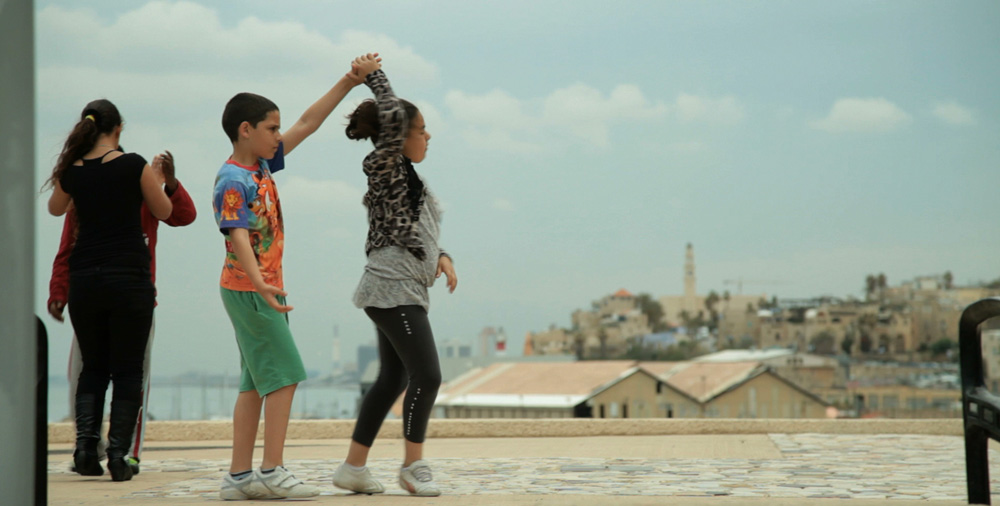It would be easy to be cynical about “Dancing in Jaffa,” a film that boasts “American Idol” producer Nigel Lythgoe, LaToya Jackson and the always opportunistic Morgan Spurlock among its team of executive producers and manages to unite two of the genres that appeal most to the grey-haired ladies likely to catch it on a Wednesday matinee at their local arthouse – films about the Palestinian/Israeli conflict and cute children doing cute things, in this case learning to do the rhumba.
So it is a credit to director Hilla Medalia that there’s something actually behind the highly commercial hook of “Dancing in Jaffa,” in which ballroom dancing champion Pierre Dulaine aims to bring together the children from schools largely segregated along Islamic and Jewish lines. Having invented a method of teaching dance to 11- and 12- year-olds in New York public schools (partially covered already in the 2005 documentary “Mad Hot Ballroom”), he travels to the highly contentious region just off the Mediterranean coast with a more personal stake in the outcome since he was born there in 1944, though whisked out only four years later. Arriving back in the city with a small portfolio bag in hand and dressed in a business suit, Dulaine looks more apt to cut a deal on a Mideast peace treaty than cut a rug, yet it isn’t long before he’s trying to find the middle ground between the two.
There are reminders of the turmoil in the region – a protest in the street is filmed with the casualness of a regular occurrence and the film’s most chilling moment is when someone warns Dulaine to drop his insistence on taking his longtime dance partner Yvonne Marceau up to see his childhood home because of resistance from the owners. However, Dulaine finds that there isn’t much in the classrooms where he teaches, at least not because of bloodlines. Instead, the boys and girls would mostly rather not join hands at first because of their natural adolescent shyness. As Dulaine draws them out, the film hones in on three students: Lois, a wide-eyed Jewish Israeli girl with a gregarious mother, Alaa, the introverted son of poor Palestinian fishing family, and Noor, a Muslim girl who’s feared as a bit of bully at school, owing perhaps to the fact that she never got to know her father.
Although Medalia may oversimplify her subjects, she also has an ability to get out of their way, operating with cinematographer Daniel Kedem with a true fly-on-the-wall style that seems to catch all involved at their most natural. As Dulaine begins to spend a little more time with Noor once class ends and Alaa and Lois practice with each other at their respective homes, humble as they may be, after school, “Dancing in Jaffa” begins to sneak up on the audience as the lessons Dulaine wants to impart to the kids sneak up on them. By the time “Dancing in Jaffa” reaches an inevitable dance competition, for all the usual talk that winning doesn’t matter, it actually rings true, considering what else they’ve taken away, adding a little heft to a film that’s intentionally light on its feet.
“Dancing in Jaffa” opens in limited release on April 11th.




